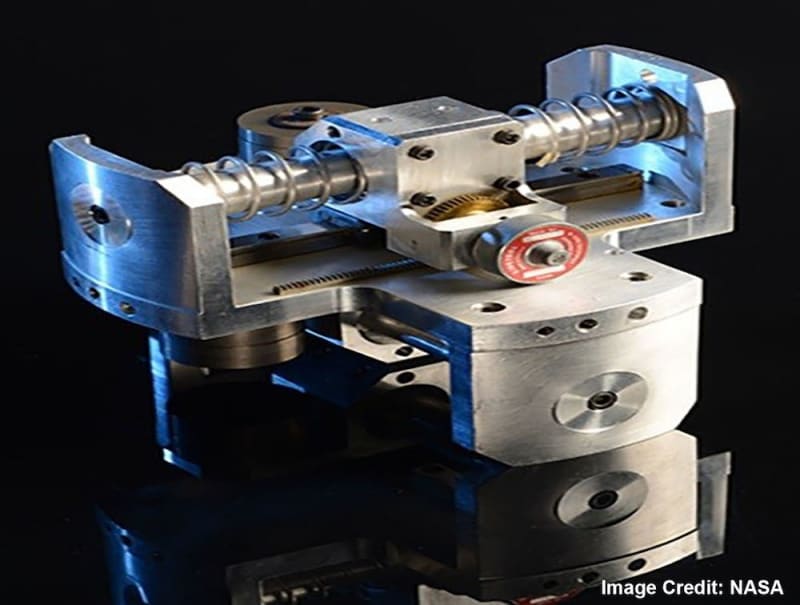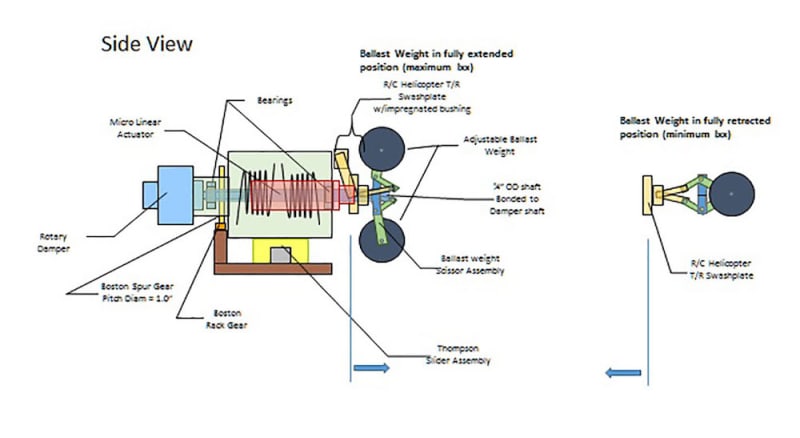
NASA Langley Research Center has developed a compact self-tuning damper to reduce vibration occurring at a fixed frequency. Tuned dampers reduce vibration of the base structure by the dissipation of energy. The magnitude of the dissipated energy is proportional to the range of motion. The NASA damper design allows the slider mass to achieve 2x-3x greater range of motion than that found in conventional devices. This enables 4x-9x more effectiveness for the same size and weight; or the same effectiveness for a 4x-9x decrease in weight. The damper is self-tunable and can be adjusted in effectiveness. The damper can be made small enough for use in wind tunnel tests or scaled up to large sizes, like those used in helicopters, wind turbines, or skyscrapers.
Benefits
Superior performance: Provides nearly order of magnitude more effectiveness for the same size/weight
Reduced weight: nearly an order of magnitude less weight for the same performance
Reduced size: approximately 3x less space required for same performance
Scalable: Can be used in a broad range of applications, from wind tunnel tests to skyscrapers
Applications
Wind tunnel models
Launch vehicles
Smokestacks
Helicopters
Wind turbines
Skyscrapers
The Technology
Structural vibrations frequently need to be damped to prevent damage to a structure or payload. To accomplish this, a standard linear damper or elastomeric-suspended masses are used. The problem associated with a linear damper is the space required for its construction. For example, if the damper's piston is capable of three inches of movement in either direction, the connecting shaft and cylinder each need to be six inches long. Assuming infinitesimally thin walls, connections, and piston head, the linear damper is at least 12 inches long to achieve +/3 inches of movement. Typical components require 18+ inches of linear space. Further, tuning this type of damper typically involves fluid changes, which can be tedious and messy. Masses suspended by elastomeric connections enable even less range of motion than linear dampers.
The NASA invention is a compact and self-tunable structural vibration damper. The damper includes a rigid base with a slider mass for linear movement. Springs coupled to the mass compress in response to the linear movement along either of two opposing directions. A rack-and-pinion gear coupled to the mass converts the linear movement to a corresponding rotational movement. A rotary damper coupled to the converter damps the rotational movement. To achieve +/- 3 inches of movement, this design requires slightly more than six inches of space.
Inventor: Thomas Ivanco NASA LaRC.
-
Awards
-
 2019 Top 100 Entries
2019 Top 100 Entries
Like this entry?
-
About the Entrant
- Name:Kimberly Middleton
- Type of entry:individual
- Patent status:pending





